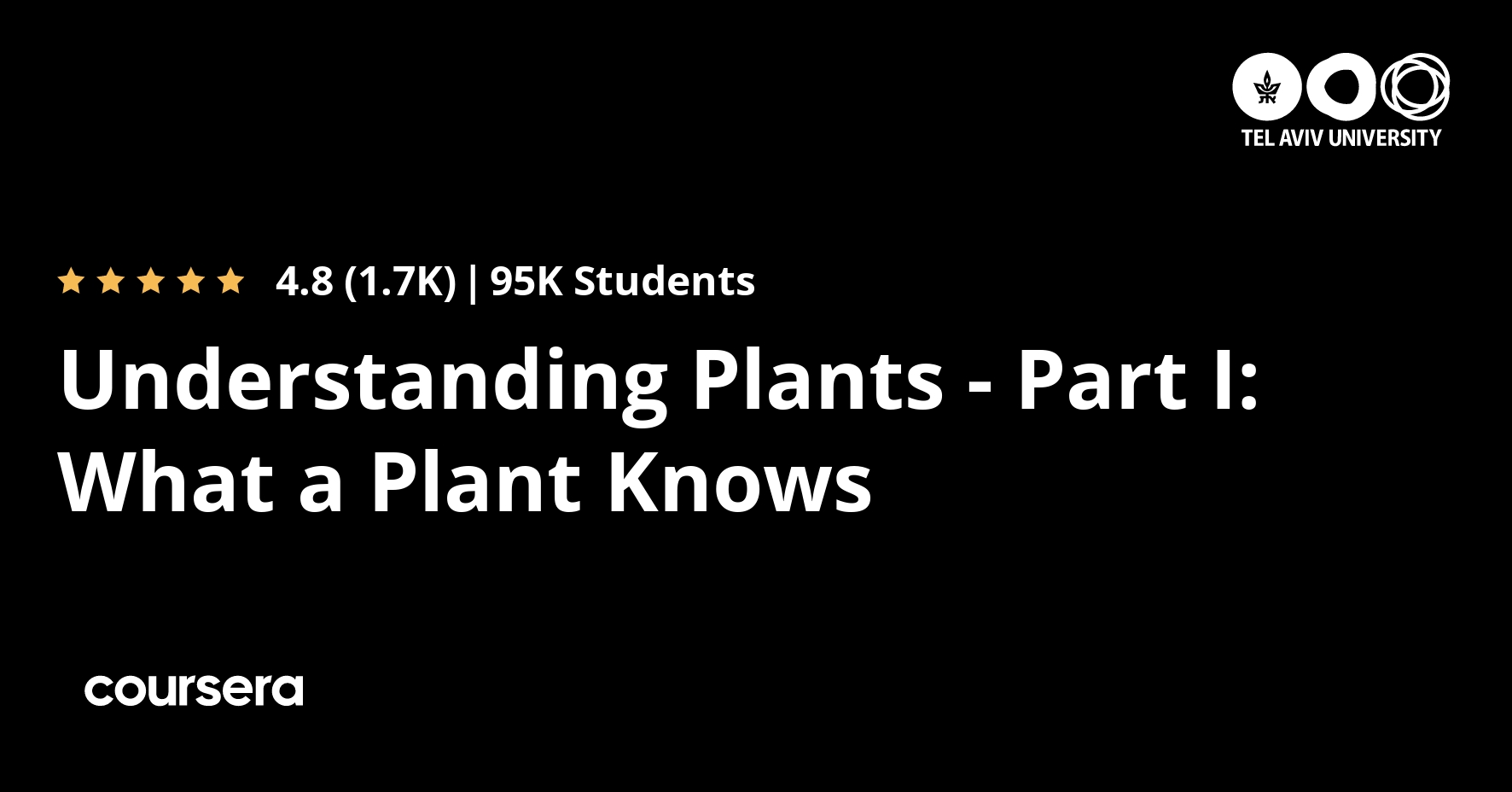Description
For centuries we have collectively marveled at plant diversity and form—from Charles Darwin’s early fascination with stems and flowers to Seymour Krelborn’s distorted doting in Little Shop of Horrors. This course intends to present an intriguing and scientifically valid look at how plants themselves experience the world—from the colors they see to the sensations they feel. Highlighting the latest research in genetics and more, we will delve into the inner lives of plants and draw parallels with the human senses to reveal that we have much more in common with sunflowers and oak trees than we may realize. We’ll learn how plants know up from down, how they know when a neighbor has been infested by a group of hungry beetles, and whether they appreciate the music you’ve been playing for them or if they’re just deaf to the sounds around them. We’ll explore definitions of memory and consciousness as they relate to plants in asking whether we can say that plants might even be aware of their surroundings. This highly interdisciplinary course meshes historical studies with cutting edge modern research and will be relevant to all humans who seek their place in nature.
This class has three main goals: 1. To introduce you to basic plant biology by exploring plant senses (sight, smell, hearing, touch, taste, balance). 2. To introduce you to biological research and the scientific method. 3. To get the student to question life in general and what defines us as humans.
Once you’ve taken this course, if you are interested in a more in-depth study of plants, check out my follow-up course, Fundamentals of Plant Biology (https://www.coursera.org/learn/plant-biology/home/welcome).
In order to receive academic credit for this course you must successfully pass the academic exam on campus. For information on how to register for the academic exam – https://tauonline.tau.ac.il/registration
Additionally, you can apply to certain degrees using the grades you received on the courses. Read more on this here –
https://go.tau.ac.il/b.a/mooc-acceptance
Teachers interested in teaching this course in their class rooms are invited to explore our Academic High school program here – https://tauonline.tau.ac.il/online-highschool
What you will learn
Introduction
Welcome to “What a Plant Knows (and other things you didn’t know about plants)”. If you have not already, please review the Course Syllabus for general information about this course.
What a Plant Sees?
This week we start a systematic review of a plant’s sensory systems by starting with plant responses to light. We will cover an overview of human vision, plant responses to light, Darwin’s experiments showing plant responses to light, phototropism, phytochrome and flowering, and modern research on phototropism. In other words, this week we get into more advanced concepts in plant sensory biology. The last module is especially advanced, and will be clearer for those of you with a strong biology background. But do not fret, aside from very basic concepts, this module will NOT be included in the exam (you will not be responsible for understanding the intricacies of the experimental methods, etc.). If you have not already, please review the Course Syllabus for general information about this course.
What a Plant Smells?
This week we continue our systematic review of a plant’s sensory systems by exploring responses to volatile chemicals (in other words, what a plant smells). We start with an overview of the plant cell, briefly review human olfaction (smell), and then explore how fruits know when to ripen. From there we go over three different experiments that explore plant responses to volatile chemicals and start exploring the controversial question, “Do plants communicate with each other?”.
What a Plant Feels?
This week we continue our systematic review of a plant’s sensory systems by exploring responses to tactile stimulation (in other words, what a plant feels). We start with an overview of the mechano-sensory system that differentiates between different tactile stimulations, briefly review the way electricity is used in neural communication, and then explore how the Venus flytrap knows when to close, and what powers the opening and closing of the Mimosa leaves. We’ll learn how plants change their structure to cope with windy conditions, and go over some of the rather complex biology that is involved in the genetic response in plants to being touched. I’ll let you know what I think of the question, Do plants feel pain? And then we’ll try to understand whether plants hear, and if they do, which music they prefer.






